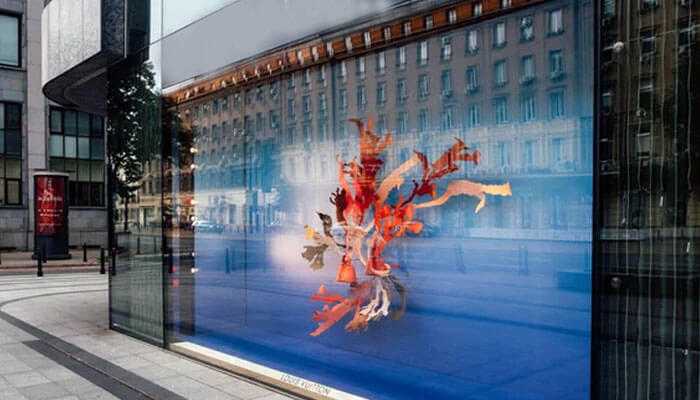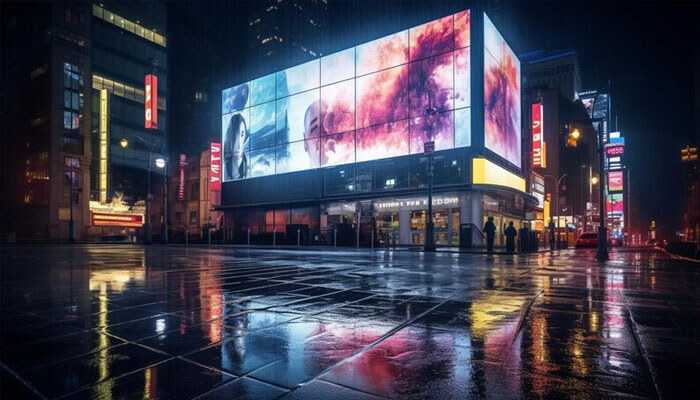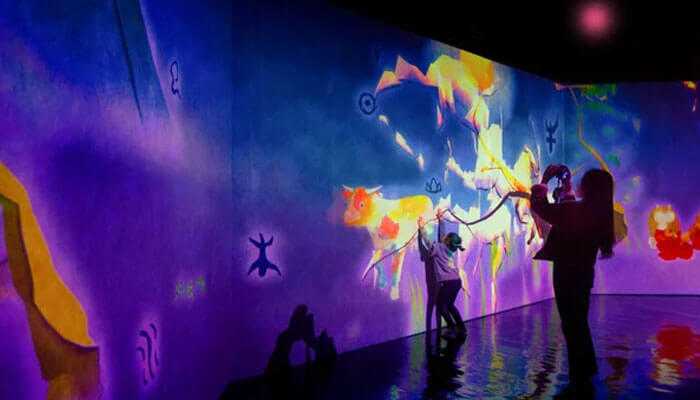In the ever-evolving landscape of technology, the quest for innovation has led to groundbreaking developments in display technology. Among these, transparent LED screens have emerged as a revolutionary solution, offering a unique blend of aesthetics and functionality. This article delves into the advantages of transparent LED screens and explores how they are transforming the way we perceive and interact with displays.
Understanding Transparent LED Technology:
Transparent LED technology combines the best of both worlds – the dynamic brilliance of LED displays and the unobtrusive nature of transparent materials. Unlike traditional displays that rely on opaque screens, transparent LED screens utilize specialized LEDs that allow light to pass through, creating a see-through effect. These screens are typically constructed using transparent materials like glass or acrylic, resulting in a visually striking display that seamlessly integrates with its surroundings.
Advantages of Transparent LED Screens:
1. Enhanced Aesthetics:
One of the most notable advantages of transparent LED screens is their ability to enhance the overall aesthetics of a space. By seamlessly blending into the environment, these screens create a modern and sophisticated look, making them ideal for a variety of applications such as retail stores, museums, and corporate offices. The transparency allows for a more open and inviting atmosphere, breaking away from the conventional barrier created by traditional screens.
2. Uninterrupted Visibility:
Transparent LED screens offer the unique advantage of maintaining visibility even when the display is active. This is particularly beneficial in scenarios where information needs to be presented without obstructing the view of the surrounding environment. For instance, in retail settings, transparent LED screens can be used to showcase products while allowing customers to see through the display to the actual store layout, creating a seamless and immersive shopping experience.
3. Versatility in Design:
The versatility of transparent LED screens extends to their design possibilities. These screens can be customized to fit various shapes and sizes, offering flexibility in their application. From large storefront windows to curved displays in museums, transparent LED technology enables designers to think beyond the constraints of traditional display solutions. This adaptability opens up new creative avenues for architects and designers, allowing them to integrate technology seamlessly into their projects.
4. Energy Efficiency:
Transparent LED screens are inherently energy-efficient. The technology relies on light-emitting diodes (LEDs), known for their low power consumption compared to traditional display technologies. As the world places an increased emphasis on sustainability, the energy efficiency of transparent LED screens makes them an environmentally friendly choice for businesses and organizations looking to reduce their carbon footprint while still harnessing cutting-edge display capabilities.
5. Dynamic Content Display:
Transparent LED screens enable the presentation of dynamic and interactive content. This is particularly advantageous in advertising and retail, where captivating visuals can significantly impact customer engagement. The ability to seamlessly integrate digital content with the physical environment creates a more immersive and memorable experience for viewers. As a result, transparent LED screens are becoming a preferred choice for businesses seeking to stand out in a crowded marketplace.
6. Daylight Visibility:
Unlike traditional displays that may struggle with visibility in bright sunlight, transparent LED screens maintain excellent clarity even in direct sunlight. This makes them suitable for outdoor applications, such as digital signage on building facades or interactive displays at outdoor events. The high brightness levels of transparent LED screens ensure that content remains vivid and easily readable, regardless of the ambient lighting conditions.
7. User Interaction and Engagement:
Transparent LED screens can be designed to facilitate user interaction, adding a layer of engagement that goes beyond traditional displays. In retail, for example, customers can interact with product information, browse through catalogs, or even make purchases directly through the transparent display. This interactive element not only enhances the user experience but also provides businesses with valuable insights into customer preferences and behaviors.
Applications of Transparent LED Screens:
1. Retail Environments:
Transparent LED screens are increasingly being embraced in retail settings to create captivating storefront displays. These screens can showcase products, promotions, and branding messages while allowing potential customers to see into the store. The result is a visually stunning and immersive shopping experience that attracts and engages passersby.
This innovative technology allows retailers to leverage the benefits of digital signage without obstructing the view into the store, providing a balance between advertising and maintaining a connection with the surrounding environment. Overall, the adoption of Dicolor LED Screen UT390 in retail spaces can enhance the attractiveness and effectiveness of storefront displays.
2. Museums and Exhibitions:
In museums and exhibitions, transparent LED screens are used to enhance storytelling and educational experiences. These screens can display information, videos, and interactive content without obstructing the view of artifacts or exhibits. The transparent nature of the screens adds a modern touch to traditional museum displays.
3. Corporate Spaces:
Transparent LED screens find applications in corporate environments, where they can be used for presentations, video conferencing, and digital signage. The sleek and modern appearance of transparent displays complements contemporary office designs, creating a visually appealing and technologically advanced workspace.
4. Hospitality Industry:
Hotels, restaurants, and entertainment venues are incorporating transparent LED screens to create dynamic and visually appealing environments. From digital menus in restaurants to interactive displays in hotel lobbies, transparent LED technology adds a touch of sophistication and modernity to the hospitality industry
5. Automotive Showrooms:
In the automotive industry, transparent LED screens are utilized to showcase vehicle features and specifications. By integrating transparent displays into showroom windows, dealerships can attract potential customers and provide them with an immersive preview of the latest car models.
Conclusion:
Transparent LED screens represent a leap forward in display technology, offering a harmonious blend of aesthetics and functionality. As businesses and industries recognize the potential of this innovative technology, transparent LED screens are becoming increasingly prevalent in various applications. From creating memorable retail experiences to transforming corporate spaces, the advantages of transparent LED screens extend beyond visual appeal to redefine the way we interact with and perceive displays. As technology continues to advance, the widespread adoption of transparent LED screens is poised to revolutionize the visual landscape, shaping a future where displays seamlessly integrate with the surrounding environment.




